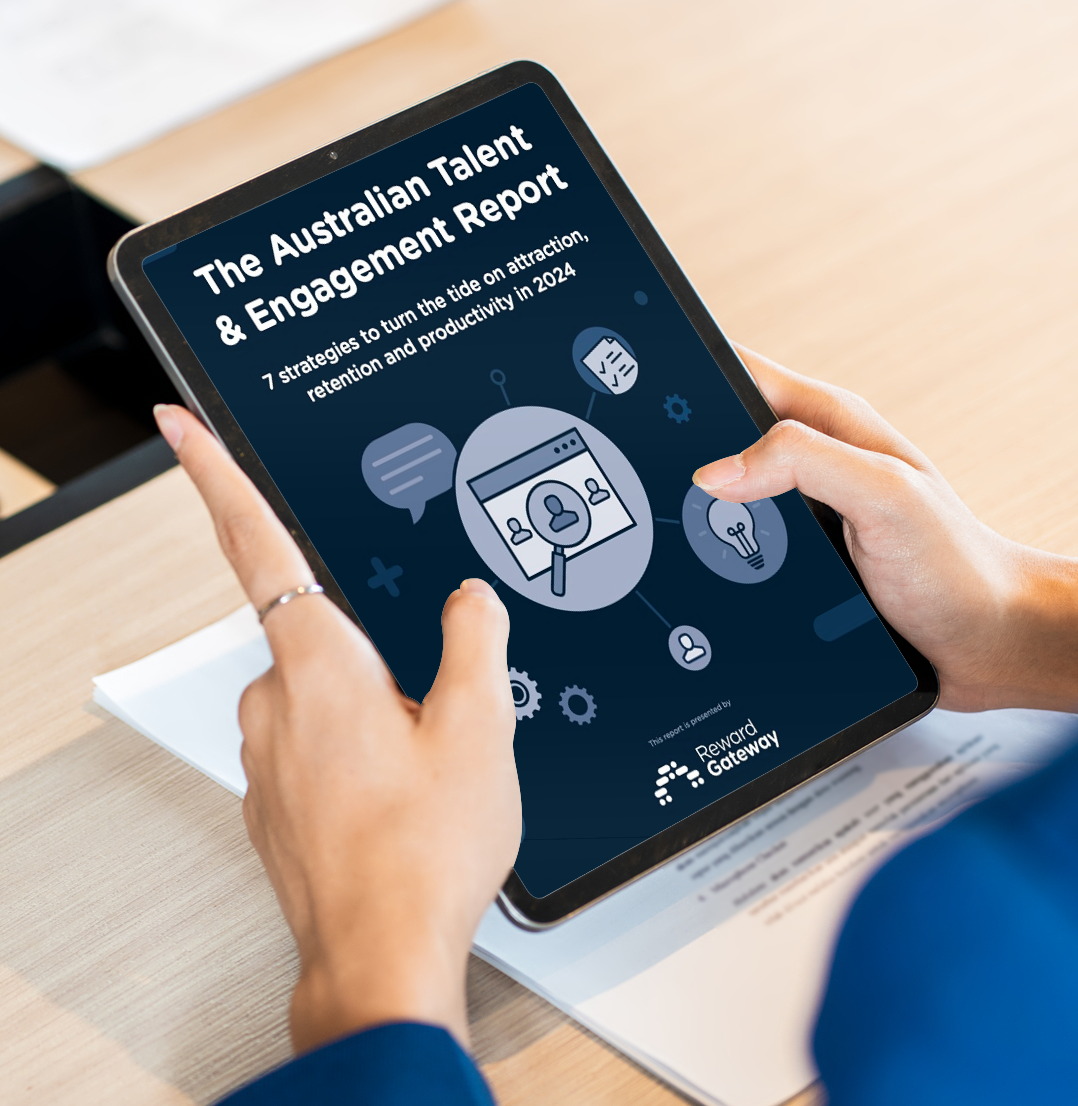As we step into 2024, organisations are reevaluating their approaches to talent attraction, engagement and retention to address the tight talent market we face in Australia.
We know that the traditional methods of attracting and retaining talent are evolving significantly. In this blog, I'll delve into three powerful strategies (shared in our most recent research report) that can significantly enhance talent attraction, engagement and productivity in the coming year.
1. Equip managers with the tools and training to support employees’ wellbeing
Our team of employee engagement consultants are regularly researching the state of employee engagement within the Australian market. A clear trend we’ve seen over our last few surveys is that having a manager who cares about their wellbeing consistently tops the list of employee needs.
Unfortunately, according to our latest research, only one in three Aussie employees (34%) agree that their manager cares. We also found that 59% of HR managers agree that leaders in Australia are not taking wellbeing seriously, with a sizable 27% saying they strongly agree.
Only a third of HR managers surveyed say employees are encouraged to focus on their wellbeing, while only 23% of employees feel encouraged by leadership to focus on their wellbeing.
So, what tools and training can organisations provide to set up managers for success when it comes to wellbeing? One simple but powerful gesture is to give managers permission to put wellbeing on the agenda. This could start with leaders sharing what they’re doing to demonstrate self-care, especially since only 24% of employees believe their manager models wellbeing.
Leaders could also ensure there’s time in team meetings and one-to-ones to check in with colleagues and consider what’s happening outside work that may be impacting their ability to concentrate. Are they worried about putting food on the table, the rising cost of rent or repaying a significant debt? While employers can’t control many external stressors, we can control how we help our employees respond. Enabling these conversations helps employees identify areas where they need additional support or services.
To ensure those people are accessing the help they need, restructure or repackage your total rewards or benefits offering so it reflects the ways your organisation supports your employees, whether it’s their financial, physical, mental, career, social or family wellbeing. Tech platforms and channels can also help time-poor managers find and direct employees to the wellbeing support provided by the company, making it easier for people leaders to encourage employees to make the most of these services.
2. Offer flexibility in work location and allow people control of their own schedule
One thing both employees and HR managers agree on was how much their workplace culture allows them to have work-life integration: only one third of both respondent cohorts agree that this was the case in their current organisations. And 35% of employees say they would quit due to a lack of flexible working, which ranks as the fifth reason for leaving.
Many organisations are reluctant to let people work on their own time and in their own place because it doesn’t fit with the nature of their work or the organisation’s business goals. While you may not be able to give employees complete control over their schedules, talk with team members about what is possible.

Some organisations give employees more freedom around which public holidays or days of celebration they take off, aligning with their personal or religious beliefs. One small change could involve allowing employees to determine their own start times, with the caveat that they’re available for clients when required.
If you provide access to flexible working, can you work with your team to ensure they are making the most of the opportunities to meet face-to-face?
Many organisations are being more intentional about the time employees spend in the office. Rather than treating it as just another workspace, they’re using the time together to create opportunities for face-to-face collaboration, connection, shared learning and the celebration of accomplishments that may not be visible to others.
Hand-in-hand with a strong face-to-face strategy is an intentional digital connection strategy. Innovative organisations are building a digital campfire of sorts: a space where employees can connect, support each other, celebrate, share their stories of contribution and how they fit into the bigger story of their company’s success.
These connection platforms are the most effective and efficient ways to reach people wherever they are, creating a ripple effect of good work and establishing a regular rhythm of communication.
3. Make it easy for managers to build strong connections with their direct reports and across the organisation
In our previous research, we learned that 91% of employees feel that being listened to by leaders has a positive impact on their work wellbeing, and that 78% of people feel more motivated when their manager recognises them for their good work. But in our recent survey, 33% of employees state that they frequently feel disconnected from their manager.
Building connections may seem easy to do, but it does require attention. What is the basis of a strong work relationship? In our view, it can be as simple as letting employees know they are valued and that their needs are supported. And how do managers form great relationships with their employees? It involves skills, time, tools and a culture of willingness.

First off, relationship-building must be modelled in an organisation from the senior leadership team to managers and employees. When senior leaders take the time and effort to build connections—not just with their direct reports but with individuals across the organisation—this sets the tone for what is valued and expected, creating a culture of connection that trickles out to all levels. Providing senior leadership with the channels and platforms to communicate openly and regularly with people across all levels of the business can help bridge this divide.
Secondly, managers need the skills to create connections—skills like being a good listener, involving employees in the strategic direction of the team and recognising great work. Ensuring managers have these skills will involve training, evaluations and employee satisfaction surveys.
Thirdly, we need to consider time and tools. Do managers feel they have the bandwidth and the latitude to set aside tactical work and meet with employees to maintain relationships? It’s about time, but it’s also about prioritisation. Do one-on-ones get cancelled regularly, or are those time slots held sacrosanct? To support the time-poor people leaders who don’t get a chance to meet or see their direct reports face-to-face on a regular basis, are there platforms or channels you can take advantage of to make sure the hard work that team members are contributing gets the visibility and recognition it deserves?
Having the right tools, processes and systems in place to connect managers and employees helps support relationship building. Only a third of HR managers say that managers in their organisation have access to tools to connect with employees remotely, and only a third say managers understand how to use these tools.
It’s time to address these gaps. Our employee engagement consultants are available to support you on this journey, please reach out to our friendly team.
 Kylie Green
Kylie Green

